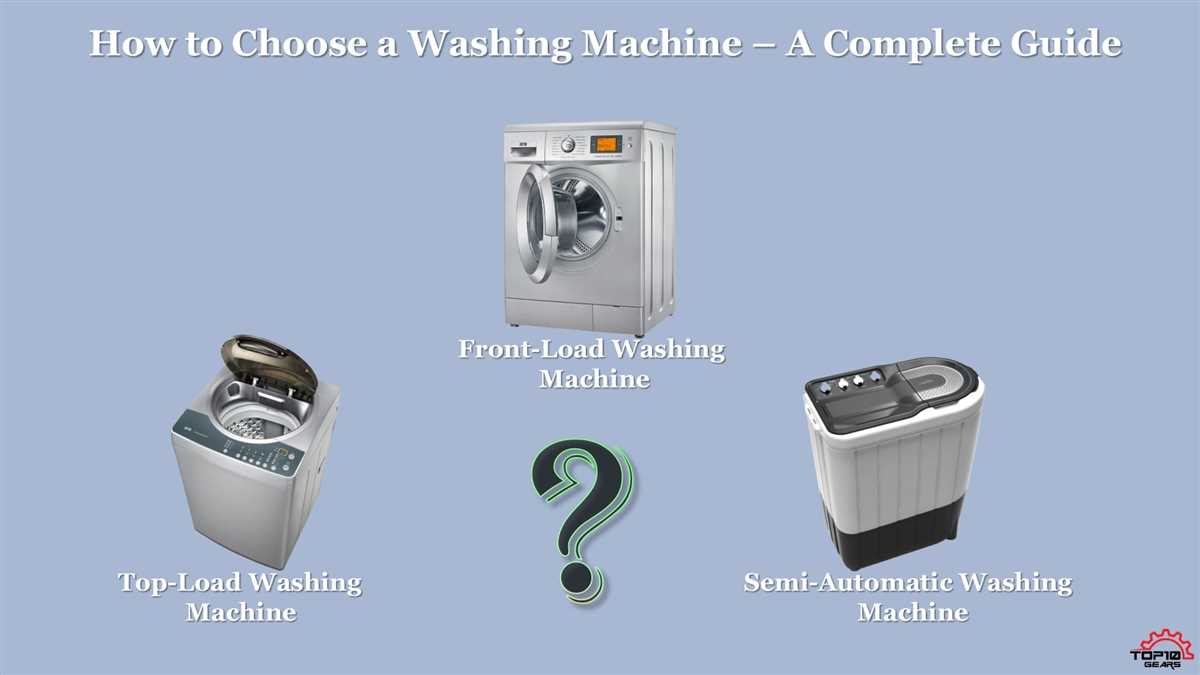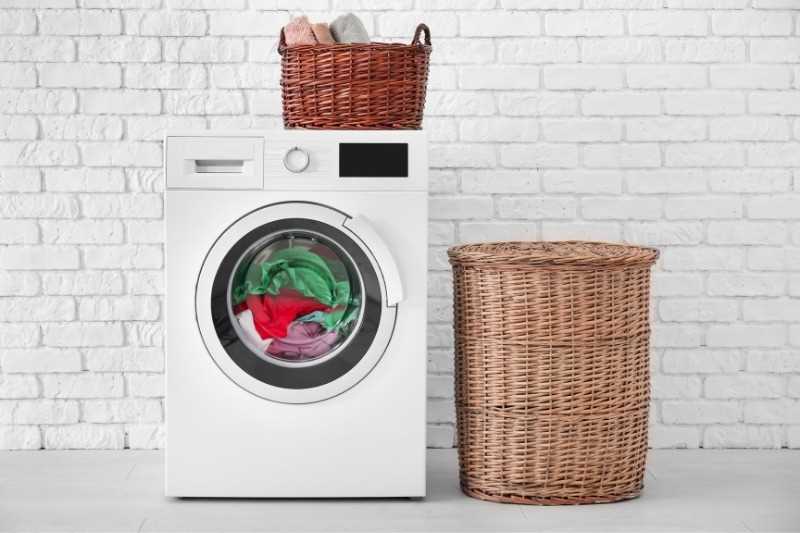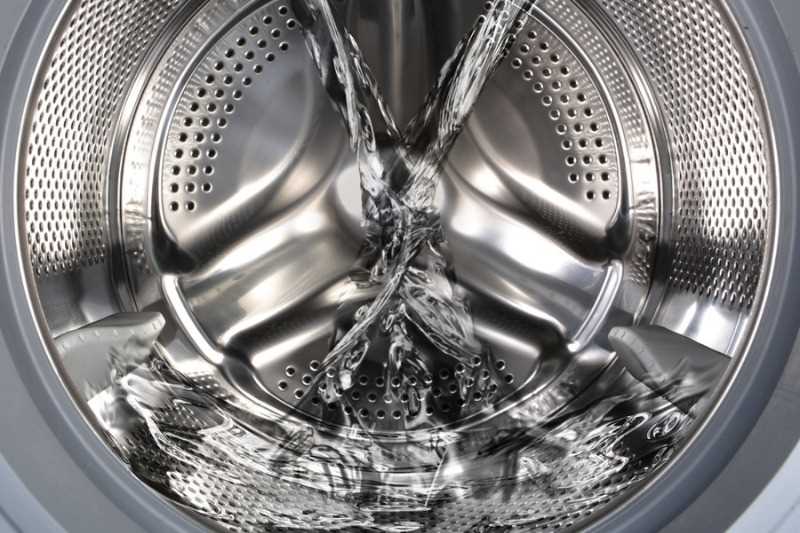




When it comes to doing laundry, understanding the various settings on your washing machine can help you achieve the best results while saving time and energy. One common feature found on many washing machines is the ‘half load’ option. But what does ‘half load’ mean and how does it affect your laundry?
The ‘half load’ setting on a washing machine allows you to wash a smaller amount of laundry than a full load. This can be useful when you have a smaller load or when you want to save water and energy. By selecting the ‘half load’ option, the washing machine adjusts the water level and the duration of the wash cycle to accommodate the reduced amount of laundry.
Using the ‘half load’ setting can have several benefits. Firstly, it can help you save water and energy, as you are using only the necessary amount for the smaller load. This is especially useful for households with fewer members or for those who do not accumulate large amounts of laundry. Additionally, washing a smaller load can result in cleaner and fresher clothes, as there is more water and detergent available for each garment.
However, it’s important to note that not all types of laundry are suitable for the ‘half load’ setting. Certain items, such as heavily soiled or bulky clothes, may require a full load setting to ensure proper cleaning. It’s always recommended to refer to your washing machine’s user manual for specific guidelines on which types of fabrics and loads are suitable for the ‘half load’ option.
Understanding the Meaning of ‘Half Load’ on a Washing Machine

Introduction:
Modern washing machines come equipped with various features and settings to provide users with efficient and effective laundry washing options. One such setting is the ‘Half Load’ option. Understanding the meaning and purpose of this feature can help you optimize your washing machine usage and achieve better results in your laundry.
What is ‘Half Load’?
The ‘Half Load’ option on a washing machine allows you to wash a smaller load of laundry, typically half the capacity of the machine. It is designed for situations when you don’t have a full load of laundry but still want to use the washing machine efficiently.
Why is ‘Half Load’ Useful?

There are a few reasons why the ‘Half Load’ option is useful:
- Water and energy savings: Running a washing machine with a full load uses more water and energy compared to a half load. By using the ‘Half Load’ option when appropriate, you can save on your water and energy bills.
- Better cleaning: A full load of laundry can sometimes result in clothes not getting as clean as they should. By using the ‘Half Load’ option, you ensure that your clothes have enough space to move around in the drum, allowing for better agitation and cleaning.
- Reduced wear and tear: Overloading a washing machine can put excessive strain on its motor and drum. By using the ‘Half Load’ option, you reduce the risk of damage to your machine and increase its longevity.
How to Use the ‘Half Load’ Option

Using the ‘Half Load’ option on your washing machine is simple:
- Sort your laundry and determine if you have a small enough load to use the ‘Half Load’ option.
- Add the appropriate amount of detergent for the load size.
- Select the ‘Half Load’ option on your washing machine’s control panel. Refer to your machine’s manual if you are unsure about the specific button or setting.
- Start the wash cycle, and let the machine take care of the rest!
Conclusion

The ‘Half Load’ option on a washing machine is a useful feature that allows you to wash smaller loads of laundry efficiently and effectively. By using this option when appropriate, you can save water and energy, improve cleaning performance, and prolong the life of your washing machine.
The Importance of Half Load Function
The half load function on a washing machine is an important feature that can help save both time and energy. This function allows you to wash a smaller load of clothes without wasting water and energy on a full load cycle.
Here are some reasons why the half load function is important:
- Water and Energy Efficiency: When you only have a few clothes to wash, using the half load function can help you save water and energy. The machine will adjust the water level and cycle time to appropriately clean the smaller load, reducing waste and lowering your utility bills.
- Gentler on Delicate Fabrics: Using the half load function is ideal for washing delicate fabrics or items that require special care. By washing a smaller load, the machine can ensure that the clothes are properly cleaned without being subjected to excessive agitation or abrasion, resulting in longer-lasting garments.
- Saves Time: If you need to wash a small load of laundry quickly, the half load function can help you save time. Since the machine will adjust the cycle time according to the load size, you won’t have to wait for a full load cycle to complete.
It’s worth mentioning that not all washing machines have a half load function, so it’s important to check the features before making a purchase. If you have a washing machine with this function, make sure to utilize it whenever possible to maximize its benefits.
How Does the Half Load Function Work?
The half load function on a washing machine is designed to save water and energy when you have fewer clothes to wash. It is perfect for small households or for individuals who want to wash a few items quickly and efficiently.
Here is how the half load function works:

- Water Usage: When you select the half load function, the washing machine adjusts the water level accordingly. It uses a smaller amount of water compared to a full load cycle. This allows you to save water, especially if you have a water-saving washing machine.
- Energy Efficiency: The half load function also helps in saving energy. Since you are washing fewer clothes, the machine uses less energy to run. This can result in significant energy savings over time.
- Program Duration: The half load function may also reduce the duration of the wash cycle. Since there are fewer clothes to wash, the machine can complete the cycle faster.
It is important to note that not all washing machines have the half load function. If it is a feature you desire, make sure to check the specifications of the washing machine before purchasing.
Additionally, some washing machines have sensors that can detect the weight of the load and automatically adjust the water level and energy consumption accordingly. This can provide even more efficiency and convenience.
Overall, the half load function is a useful feature for saving water and energy when you have smaller laundry loads. It allows you to do quick and efficient washes without wasting resources.
Benefits of Using the Half Load Function
- Water and Energy Efficiency: One of the main benefits of using the half load function on a washing machine is its water and energy efficiency. When you only have a few items to wash, using the half load function allows you to use less water and energy compared to a full load. This can help you save on your utility bills in the long run.
- Time-saving: Another advantage of using the half load function is that it saves you time. With a smaller load, the washing machine can complete the washing cycle more quickly, allowing you to have your clothes clean and ready in a shorter amount of time. This can be particularly beneficial if you need an item of clothing urgently or if you have limited time available for laundry.
- Gentler on Fabrics: Washing machines with a half load function are designed to be gentle on fabrics. When you only fill the machine to half capacity, there is more room for the clothes to move around and be cleaned thoroughly without being overly squeezed or agitated. This helps to prevent excessive wear and tear on delicate fabrics, ensuring that your clothes last longer.
- Flexibility: The half load function gives you more flexibility in your laundry routine. If you only have a small amount of laundry to do, you don’t have to wait until you have a full load to do the washing. You can simply use the half load function, which allows you to wash a smaller load whenever you need to.
Overall, the half load function on a washing machine offers several benefits, including water and energy efficiency, time-saving, gentler treatment of fabrics, and flexibility in your laundry routine. It is a useful feature to have, especially for those who frequently do smaller loads of laundry.
Energy and Water Savings with Half Load
One of the key benefits of using the half load setting on your washing machine is the potential energy and water savings. When you only have a few items to wash, using the full load setting would be inefficient and wasteful. The half load setting allows you to wash a smaller amount of laundry, using less energy and water.
By choosing the half load option, you can reduce the amount of electricity used during the washing cycle. The machine will adjust the amount of water and detergent needed based on the load size, resulting in significant energy savings.
In addition to energy savings, choosing the half load setting also conserves water. Washing machines typically use a large amount of water to properly clean a full load of laundry. However, when you have a smaller load, using the half load option ensures that you are not wasting excessive amounts of water.
Not only does using the half load setting save energy and water, but it can also help extend the lifespan of your washing machine. When the machine is not filled to capacity, there is less strain on the motor and other components, reducing the risk of wear and tear.
It is worth noting that not all washing machines have a half load setting. If energy and water savings are important to you, consider purchasing a machine that offers this feature. It may require a slightly higher investment upfront, but you will likely recoup the cost in the form of lower utility bills over time.
In summary, using the half load setting on your washing machine can result in significant energy and water savings. By choosing this option for smaller loads, you can reduce your carbon footprint and lower your utility bills. Additionally, using the half load setting can help prolong the life of your machine. It’s a win-win for both your wallet and the environment.
Tips for Using the Half Load Function Effectively

The half load function on a washing machine can be a great way to save energy, water, and time. However, using it effectively requires some knowledge and consideration. Here are some tips to help you make the most out of the half load function:
1. Sort your laundry carefully
Prioritize your laundry loads by separating them into heavily soiled items and lightly soiled items. This will allow you to use the half load function for the lightly soiled items and ensure that they get the appropriate amount of water and detergent.
2. Don’t overload the machine
While the half load function allows you to wash a smaller load, it’s important not to overload the machine. Overloading can result in poor cleaning performance and may even damage the washing machine. Make sure to follow the manufacturer’s guidelines for maximum load capacity.
3. Adjust the detergent dosage
When using the half load function, it’s important to adjust the detergent dosage accordingly. Most washing machines have specific detergent dosage recommendations for different load sizes. Be sure to read the detergent packaging or consult the machine’s manual for guidance.
4. Choose the appropriate wash cycle
Not all wash cycles are suitable for the half load function. Some cycles may not provide enough water or agitation for smaller loads. Check the machine’s manual to find out which wash cycles are recommended for half load washing. Using the appropriate wash cycle will help ensure proper cleaning and care for your laundry.
5. Consider using quick wash settings
If you’re washing a small load using the half load function, consider using quick wash settings if available. Quick wash cycles are designed to clean lightly soiled items in a shorter amount of time, saving even more energy and water.
6. Regularly clean the washing machine

Using the half load function can cause detergent and dirt residues to accumulate in the machine over time. To prevent unpleasant odors or reduced washing performance, it’s important to clean the washing machine regularly. Follow the manufacturer’s instructions for cleaning and maintenance.
7. Monitor the results
Pay attention to the performance and cleanliness of your laundry when using the half load function. If you notice any issues, such as inadequate cleaning or excessive wrinkling, you may need to adjust your laundry sorting or machine settings.
By following these tips, you can effectively use the half load function on your washing machine to save energy, water, and time without compromising on cleanliness and care for your laundry.
FAQ
What does ‘half load’ mean on a washing machine?
‘Half load’ on a washing machine refers to a setting that allows you to wash a smaller load of laundry. It uses less water, energy, and time compared to the regular cycle.
Why would I want to use the ‘half load’ setting?
The ‘half load’ setting is useful when you have a small amount of laundry to wash. By using this setting, you can save water, energy, and time, as the machine will adjust the wash cycle accordingly.
Can I use the ‘half load’ setting for any type of laundry?
Yes, you can use the ‘half load’ setting for any type of laundry, as long as the load size is small enough. However, it is recommended to avoid overloading the machine to ensure proper cleaning and avoid damage.
Does using the ‘half load’ setting affect the cleanliness of my laundry?
No, using the ‘half load’ setting does not affect the cleanliness of your laundry. The machine adjusts the wash cycle to ensure proper cleaning, even with a smaller load. However, it is important not to overload the machine, as this can impact the cleaning efficiency.












